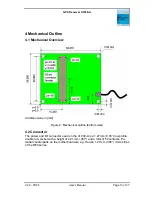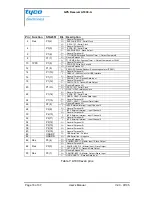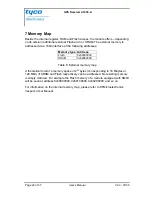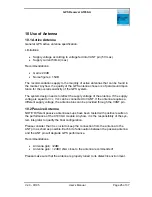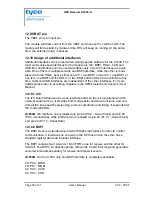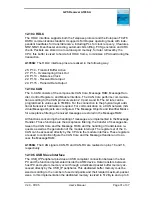
GPS Receiver A1030-A
12 Applications and Hints
12.1 Minimum Configuration
Please refer to chapter 3.1 Introduction for details. In addition, for optimized start-up
behavior it is strongly recommended to provide power at the VBAT pin when pulling
the ENABLE pin to LOW. This will improve start-up times after wake-up!
12.2 Antenna Sensor Pin (ANTSTAT)
The Antenna Sensor pin is an output pin. It provides correct status information for
an active GPS antenna with current consumption in the defined range! For an ac-
tive antenna with a current consumption outside this range, an external circuit could
detect the connection or a disconnection or a short circuit.
•
Logic low when:
Iant < 9mA
•
Logic high when:
9mA > Iant < 16mA
•
Logic low when:
Iant > 16mA
Iant = DC current of GPS antenna (DC current through sensing resistor on GPS
module)
The Antenna Sensor pin can detect when an active antenna is connected. It can
also detect when the antenna is short-circuited or disconnected for some reason.
Please consider that the Antenna Sensor can provide no useful output when the
GPS antenna is fed externally, i.e. the VANT pin is not used (the sensing resistor
on the GPS module can not sense any DC current).
12.3 Gain select pin (GS)
The LNA Gain Select pin is an input pin.
•
Pin at GND (low) or open: LNA Gain 14dB (default)
•
Pin at Vcc (high): LNA Gain 4dB
It is recommended to leave the pin unconnected. This allows for amplification of
weaker signals and a firmware implementation of an automatic gain control (AGC)
function.
12.4 VANT pin (antenna voltage input pin)
The VANT pin is an input pin.
The supply voltage for an active GPS antenna has to be fed into the VANT pin.
The easiest way to do that is to connect Vcc to VANT. The maximum current is
50mA. A current limiter is integrated on the module.
V2.0 - 07/05
User’s Manual
Page 27 of 37

